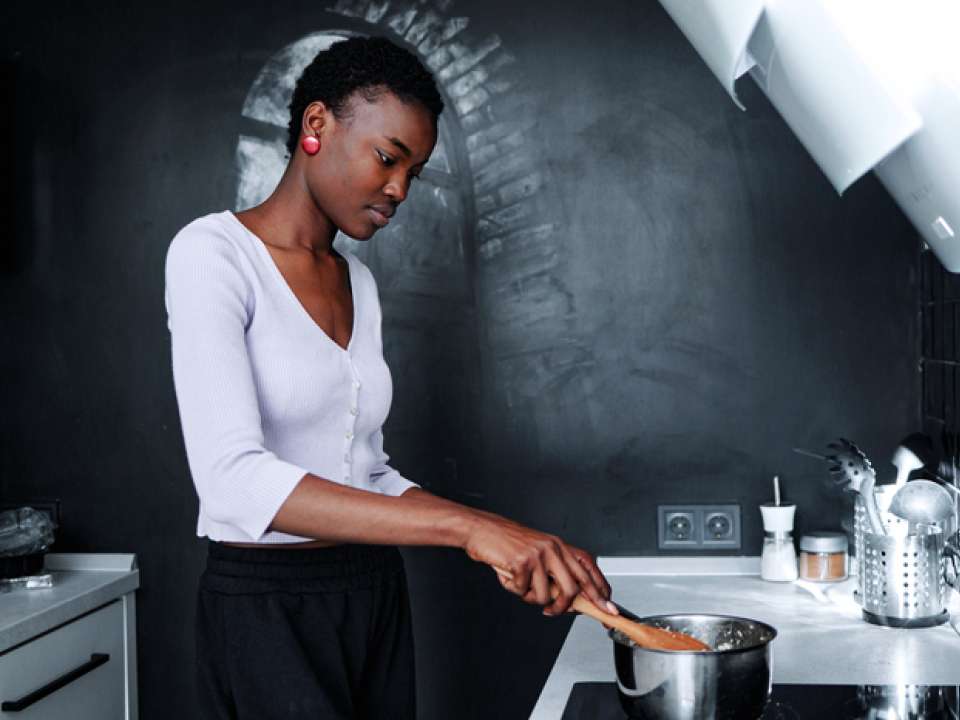
You might not be staring down your 50s or 60s yet, but that doesn’t mean you should ignore your joints.
Yes, joint pain can occur in even the most active adults. But there are things you can do in your 30s and 40s to maintain joint and tendon health — and it doesn’t need to take a lot of time. (If middle age is already staring you down, these tips still apply.)
Tip #1: Stay active with exercise snacks
Staying physically active is one of the best things you can do to prevent joint pain: Regular exercise strengthens muscles and makes you more mobile and flexible.
“There’s increasing evidence that inactivity can harm overall health,” says Dr. Charles Kenyon, a physical medicine and rehabilitation doctor and sports medicine specialist with UW Medicine. “It’s important for everyone to find ways to move.”
Regular activity keeps your joints lubricated and flexible, preventing stiffness and improving your ability to move.
It can also reduce your risk of conditions that cause joint pain, swelling and stiffness, including osteoarthritis, a degenerative joint disease that affects over 32 million adults in the U.S. Consistent exercise can strengthen the muscles around your joints and reduce the stress on your cartilage.
Kenyon says you don’t have to carve out an hour at a time to make a difference.
“While activity guidelines such as striving for 150 minutes of moderate-intensity aerobic exercise per week and aiming for 8,000-10,000 steps per day are well established, smaller bursts of activity can still lead to significant benefits in fitness and orthopedic health,” says Kenyon. “And exercise ‘snacks’ — five minutes here or there to get your heart rate up at a higher intensity— are great for overall health.” Quick exercises might include a brisk walk, jumping rope or climbing stairs.
Tip #2: Ease into new activities
Thinking of running a race? Or maybe rucking is more your style. New activities can be great for your health, and a change of routine can keep you motivated. But it’s important to start slow when you try a new exercise routine.
“I’ve seen people jump into high-intensity workout programs that they’ve found on social media,” Kenyon says. “These can be tremendously helpful, but you should have the right foundational fitness level before progressing into high-intensity activities that involve new movements.”
Preparing your joints and muscles is vital to avoid injuries that can cause joint pain. Sudden movements or excessive strain on your joints can lead to sprains, strains or tears. Gradually increase intensity and duration to reduce the risk of these injuries and protect your joints from harm.
New fitness routines can also aggravate existing muscle imbalances, which can cause joint pain and dysfunction. You can support your joints and correct muscle imbalances by incorporating strength training exercises that target all major muscle groups. Resistance training is increasingly important as you age to support activities such as running, skiing or pickleball. Weightlifting programs are great for building muscle, but bodyweight exercises can also do the trick and do not require expensive equipment.
Finally, repetitive movements or overtraining can cause nagging overuse injuries like tendonitis or bursitis. When starting something new, listen to your body and watch for signs of discomfort or pain. Make sure you give yourself plenty of time for rest and recovery between sessions.
Tip #3: Ramp up your warmup
Warming up before you exercise increases blood flow to your muscles. This makes your joints work better and reduces your risk of injury. Without a good warmup, your joints may feel stiff, and you may have a limited range of motion.
Taking a few minutes to warm up increases the production of the fluid that lubricates your joints. This fluid acts like a shock absorber and protects your cartilage from damage. And cold muscles and stiff joints are a recipe for sprains and strains during physical activity. Start your workout with a dynamic warmup that includes movements and stretches.
Tip #4: Eat a Healthy Diet
There are things beyond physical activity you can do to prevent joint pain now and in the future.
“A well-balanced diet can help with energy levels and reduce inflammation,” Kenyon says. “Include a vegetable and/or fruit with each meal, moderate your portions and choose healthy snacks.”
Weight management is also essential for joint pain prevention. Each pound of weight loss can reduce multiple pounds of pressure on your joints.
Tip #5: Don’t wait for an injury to seek care
You don’t have to be hurt to seek advice from a physician or physical therapist about joint care. Talk to a health professional if you’re active and experience pain or have concerns about your form during exercise.
“We are always happy to help discuss new activity goals as well as modifications as any aches and pains arise,” says Kenyon. “Small habit changes, when stacked up over time, can create momentum for long-term success in our fitness journey.”

 Healthy ideas for your inbox
Healthy ideas for your inbox





